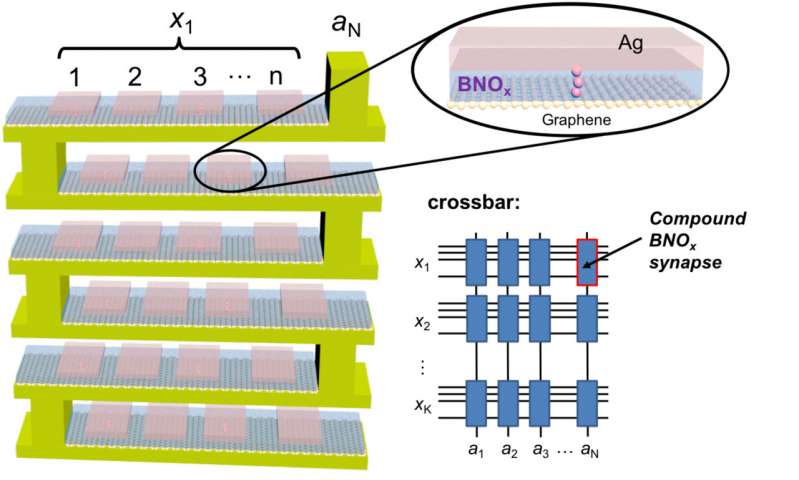
Hardware that mimics the neural circuitry of the brain requires building blocks that can adjust how they synapse. One such approach, called memristors, uses current resistance to store this information. New work looks to overcome reliability issues in these devices by scaling memristors to the atomic level. Researchers demonstrated a new type of compound synapse that can achieve synaptic weight programming and conduct vector-matrix multiplication with significant advances over the current state of the art. They discuss their work in this week’s Journal of Applied Physics. This image shows a conceptual schematic of the 3D implementation of compound synapses constructed with boron nitride oxide (BNOx) binary memristors, and the crossbar array with compound BNOx synapses for neuromorphic computing applications. Credit: Ivan Sanchez Esqueda




